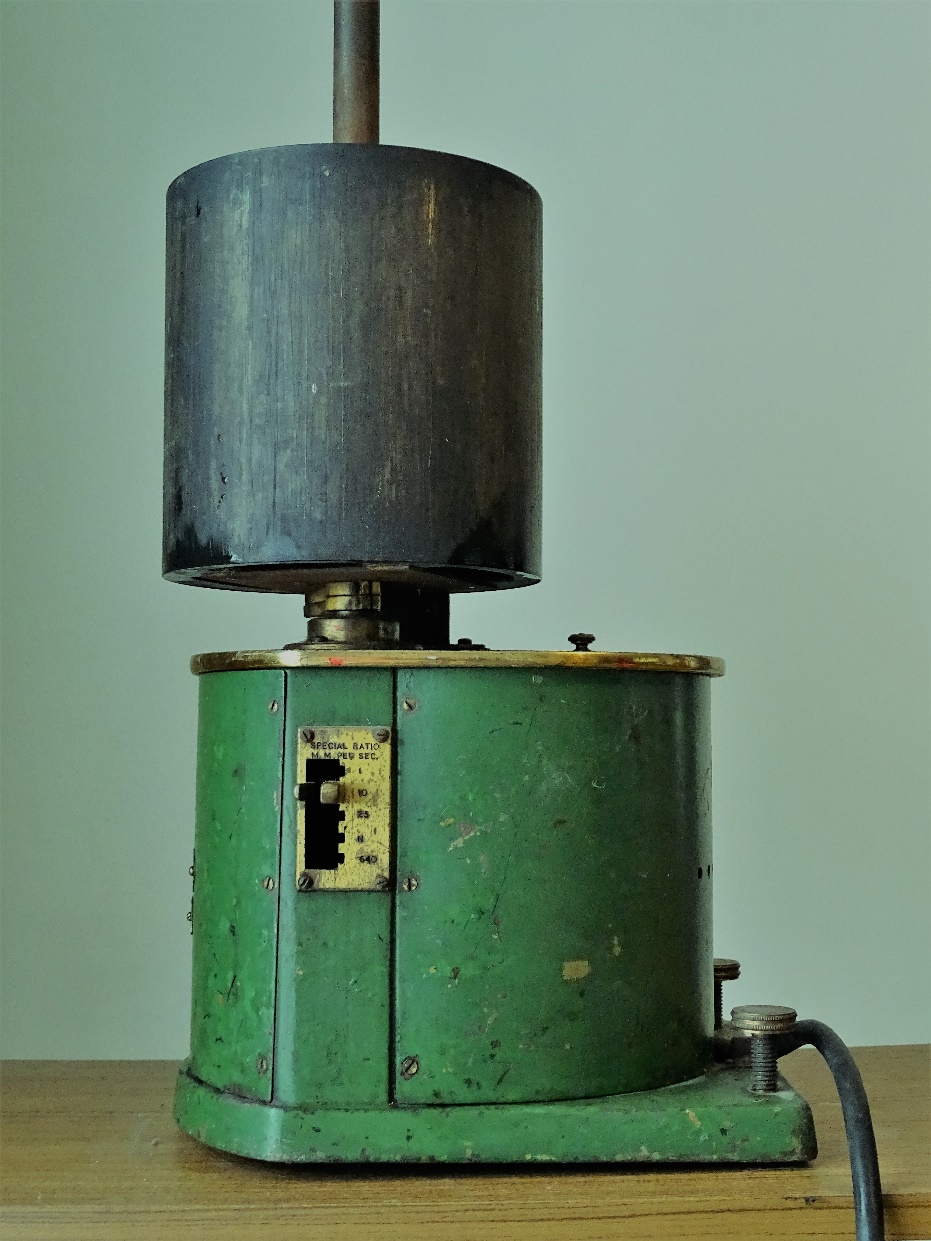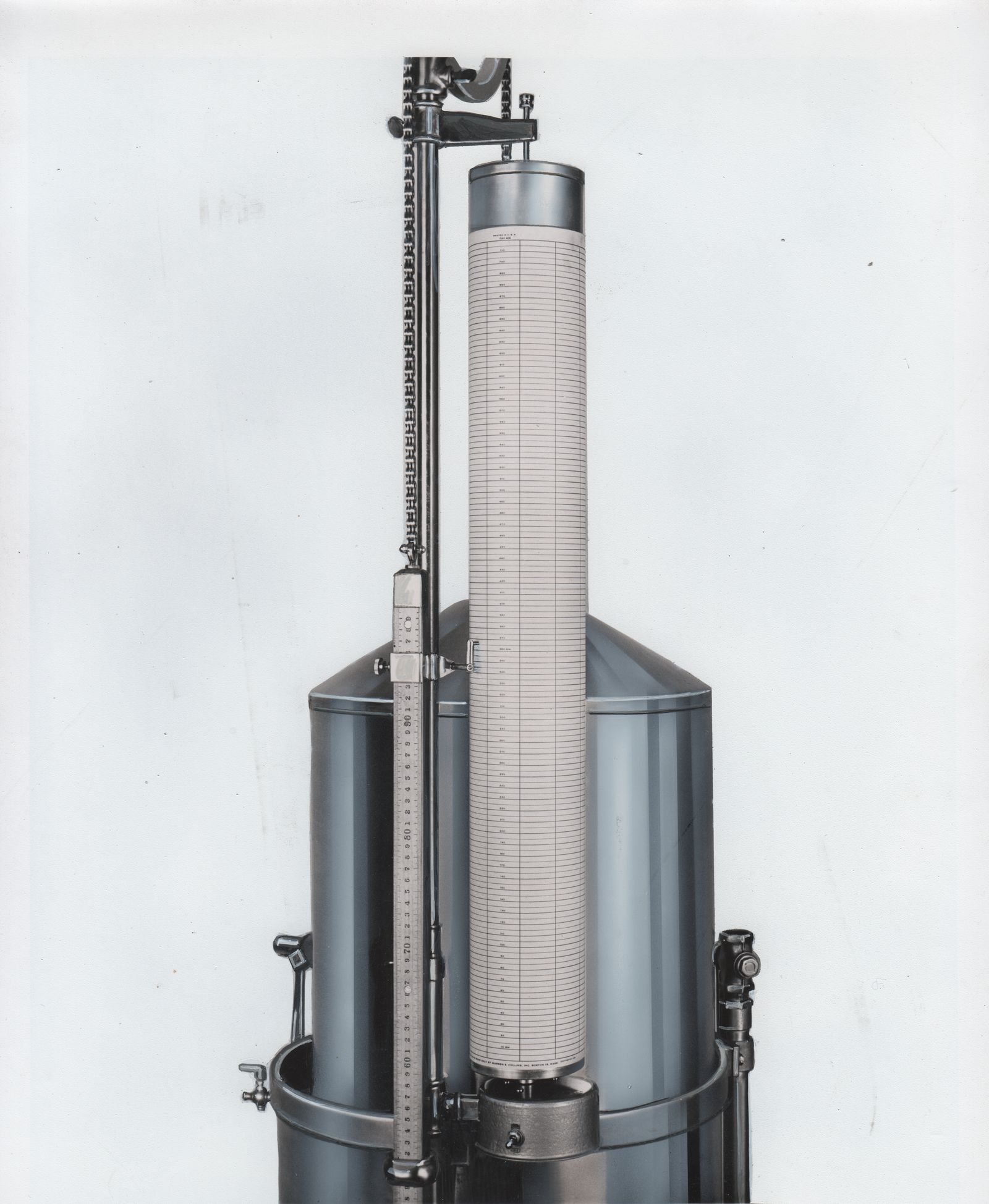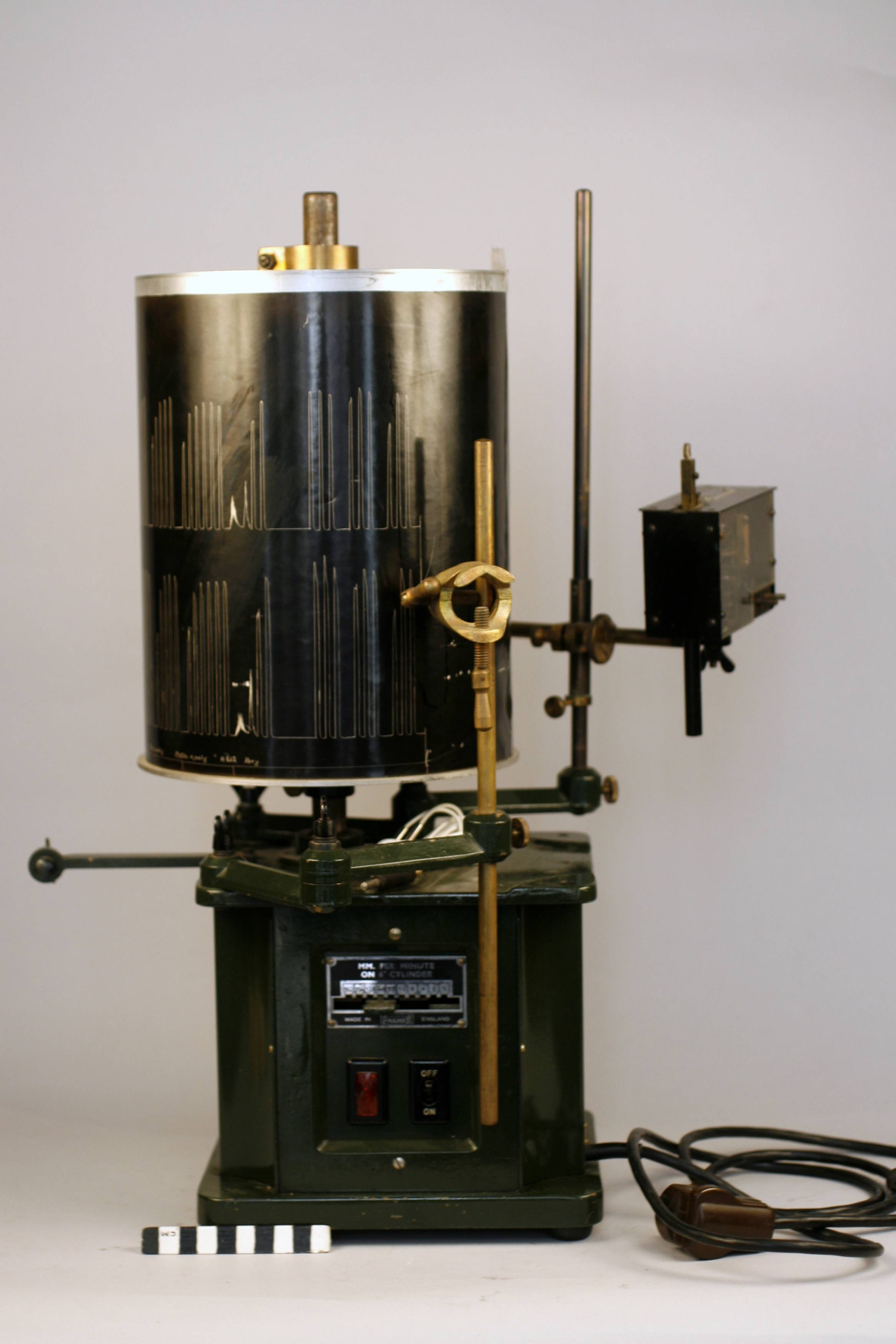
Photo and description are kindly provided by Dr. David Chinn, for an upcoming ARTP article.
“Sherrington Stirling Kymograph Recording Drum (C F Palmer (London) Ltd), c. 1955
A strip of paper the width of the drum is held above a smoking gas flame, the smoke from which settles on the paper to leave a surface of carbon soot. The smoked strip is wrapped around the drum and secured in place. The drum is set to run at a suitable speed (speeds available of 1, 10, 25, or 640 mm.s-1) and a stylus from a water spirometer (or other physiological recording device) is held against the strip. The recording is ‘scored’ into the carbon surface. Afterwards a calibration mark is applied and the strip is removed and passed through a ‘fixing fluid’ to create a permanent record that, after drying can be measured. It was a convenient way to record physiological signals but could be a very mucky job!”

Undated publicity photo. Date is based on the style of the gasometer and kymograph but could be a decade either way.

Found on the Steno Museum Collections website. Although this kymograph was used to measure the effect of medications on muscle contraction it is much the same as the smoked-drum kymographs used on spirometers during the late 1800’s and early 1900’s. This was manufactured by Palmer of England, probably in the 1920’s or 1930’s.
“The black drum is prepared as follows: A piece of strong, glossy graph paper tightened on the drum. The drum is rotated through a strong sooty flame (gas bubbled through toluene). During the experiment the sooty drum rotates a predetermined speed which is selected on the kymograph gear. After trying out the sooty paper is carefully removed from the drum and fixed with dammar resin dissolved in gasoline.”
The diverse, quirky and mostly forgotten history of Pulmonary Function testing


